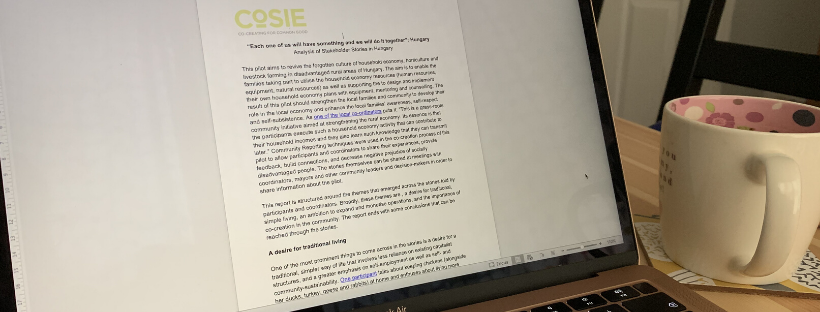LOCKDOWN WORKING: ANALYSIS, ANALYSIS, AND MORE ANALYSIS

Lockdown working has presented a fair few challenges for PVM. We’re a largely face-to-face organisation: delivering training, attending project meetings, performing dialogue interviews… It’s all done in person.
As a result, we’ve had to rethink a lot of things. Where we’ve been able to, things are being done remotely. Workshops, knowledge exchanges and meetings have been moved online and we’ve all become experts in a range of video conferencing software and online collaboration tools. Where online hasn’t been a possibility projects have been paused with their deadlines extended, to be picked up again once lockdown measures have eased.
This has triggered a huge rethink in our workflow priorities. Projects that, just weeks ago, were massive priorities with imminent milestones have now shuffled to the back of the queue while work that has been put off in favour of more pressing deadlines (you know how it can be…) has suddenly found itself in the foreground.
For Sarah, this meant spending May taking a deep dive into our curation reports for the CoSIE project to form one of our project deliverables. The deliverable itself isn’t due for a good few months yet, but getting these analyses drafted now means that later this year the team isn’t juggling writing several thousand words, editing stories into a film, and trying to catch up with projects that have been on-hold.
So what are the curation reports?
The curation reports form a key part of the Community Reporting methodology. It involves looking at the stories gathered, pulling out the key themes that span them, and writing them up into an analysis that summarises our findings.
For the CoSIE project, this means looking at the stories gathered in each of the pilot projects. For Sarah, this meant examining the stories from Houten and Nieuwegein (both in The Netherlands), and Hungary, resulting in around 11,000 words of analysis. The insights gleaned were sometimes surprising. For instance, the Hungarian pilot which is all about rediscovering home economics and self-sustainability in disadvantaged communities, demonstrated that many of the participants show that there is a large demand for homemade produce, so much so that some participants are looking at turning their home enterprises into small businesses. Some stories, meanwhile, demonstrated the strengths and weaknesses of co-creation – sometimes showing it can only work when everyone involved is wholeheartedly invested.
While lockdown has forced us to reassess our entire working practice, it has perhaps given us opportunity to take time over things we would have ordinarily put back, and given us the time and space to properly examine them without distractions.
That being said, we can’t wait to be back organising workshops and conferences, and delivering training again.
